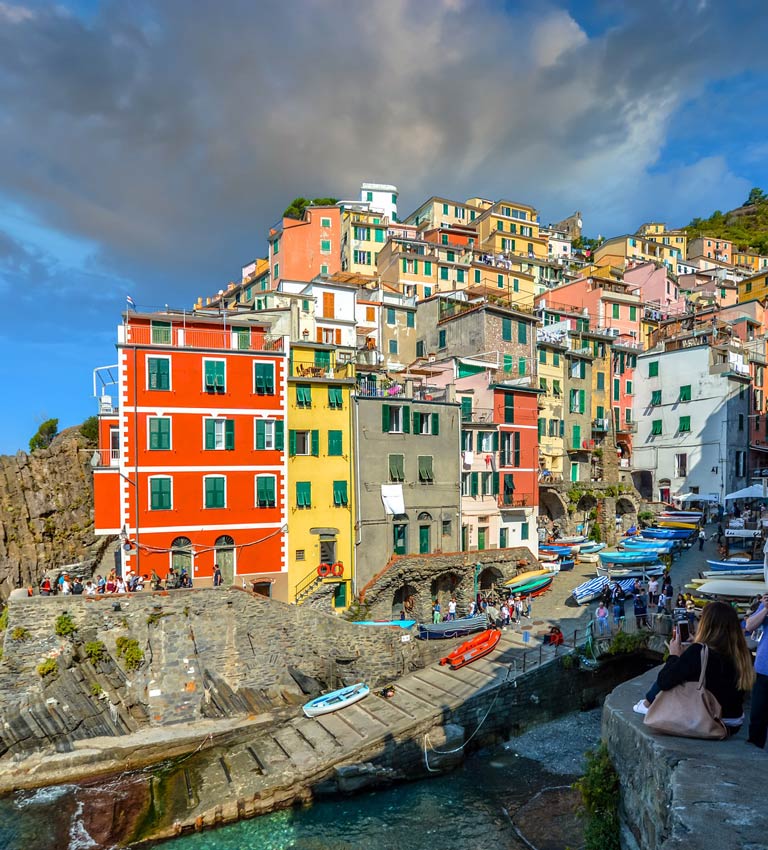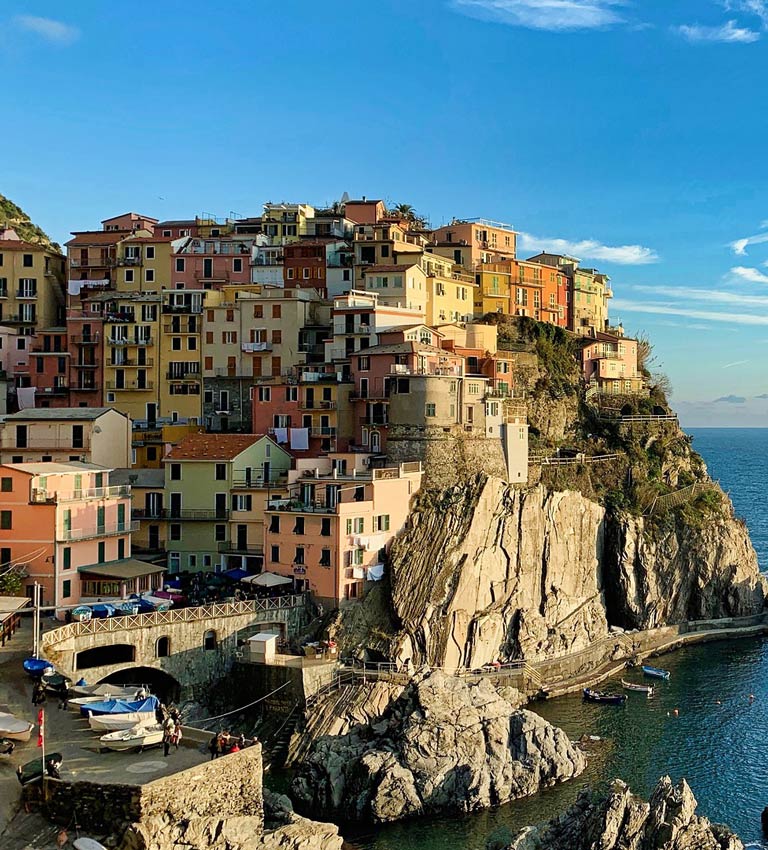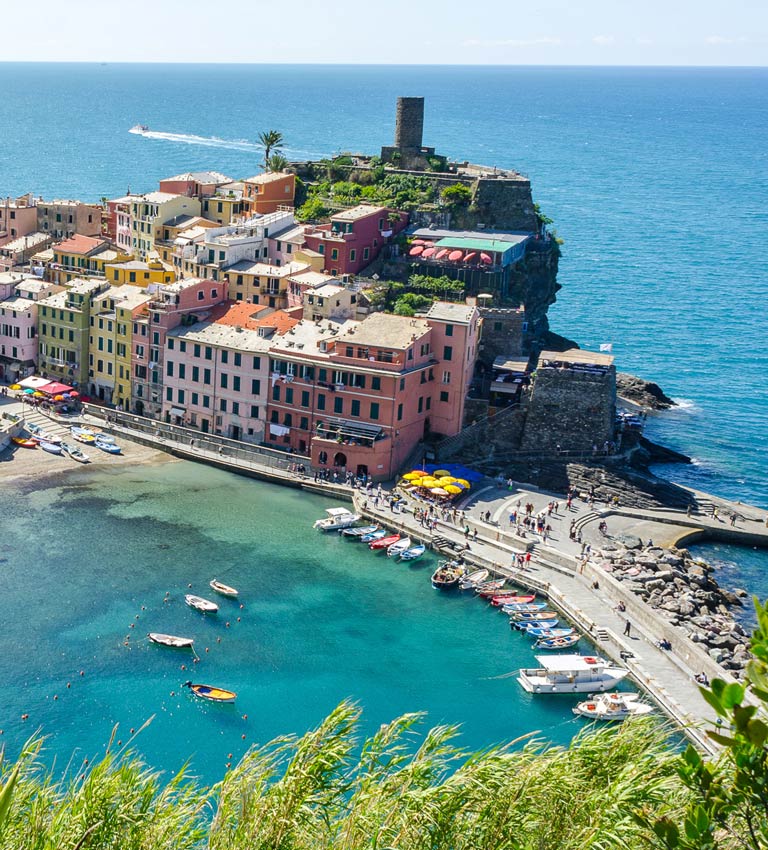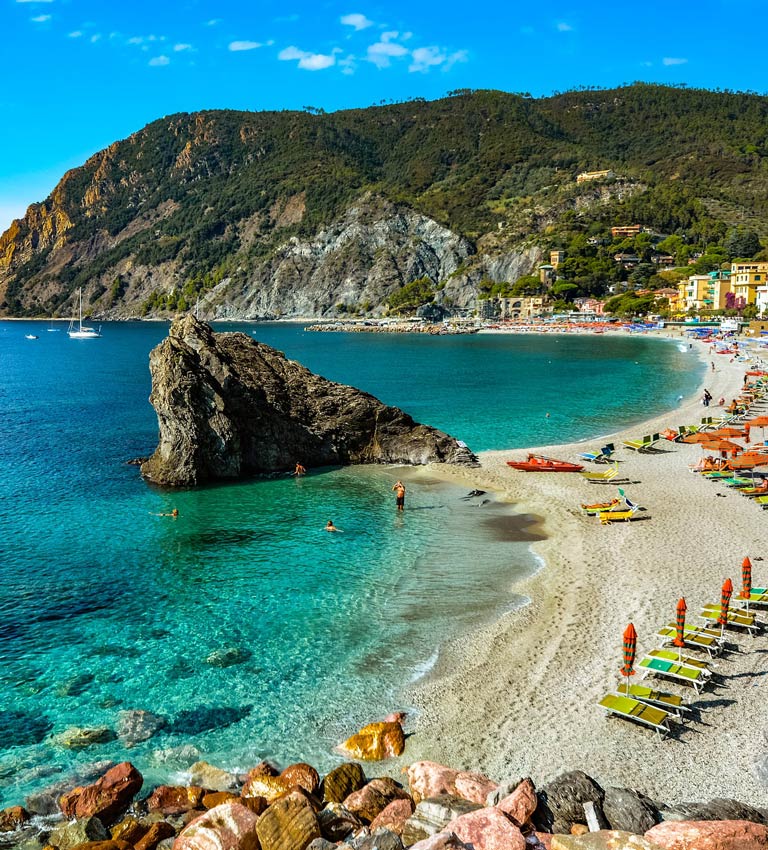Cinque Terre
Leaving the gulf of the Poets, the coast becomes harder and harsher, as if to preserve a treasure.
The five villages that stand out from Punta Montenero to Punta Mesco seem to be the most valid reason.
The Cinque Terre, National Park since 1999 and UNESCO World Heritage (with Lerici, Portovenere and the Palmaria Islands, Tino and Tinetto)
since 1997 welcome us with their ancient charm, made of simple flavors, clear skies, seas not always lenient, enchanting the visitor who, enchanted,
observes the rapid developments of streets and stairways, in a more vertical than horizontal dimension.
Riomaggiore, Manarola, Corniglia, Vernazza and Monterosso need time to be discovered; the waiting time of a train, still the best way to move in these places, the time of a walk along the "Sentiero Azzurro" that unites them all, the time of a break between the terraces planted with vineyards to taste the Cinque wine Terre DOC or, with a little luck, the rare and delicious "Sciacchetrà", a sweet wine obtained only from local grapes.

Riomaggiore
It raises at the mouth of a rapid Apennine stream, the Romans' "Rivus Major", today covered and paved.
According to the tradition, this village was first built in the 8th century when a group of Achaeans, escaped from the persecution of the Byzantine emperor Leo III, found shelter there.
The nice walk from the top of the village to the Sanctuary of the Madonna del Monte Nero (Black Mount Madonna) offers a wonderful view of the Cinque Terre, another amazing walking path brings you to Telegrafo and from there to Portovenere.

Manarola
Situated on a rocky pedestal overhanging the sea, Manarola looks as a compact group of houses brightly coloured, almost all with a terrace on the top, i.e. the typical "cassola" where in September, after the grape harvest, the best grapes are lied in the sun to obtain the wine called Sciacchetrà.
Here, like in Riomaggiore, the stream that flows between the houses is almost completely covered today and forms the current main street which ends at the characteristic square cut in the rocks, where boats are hoisted with the strength of one's arms. The chessboard square of the S. Lorenzo church, in the village upper part, often becomes - out of necessity - a playing round for kids, whose joyful voice replaces the noise of cars. Now a deviation towards Groppo and Volastra - two quiet inland hamlets - is worth the while. Half an hour walk on a path amidst vines and century-old olive trees leads to the top of the Volastra hill where the light air and the large green opening surrounded by trees in.

Corniglia
This village, which looks more like a rural than a seafaring village, is the only one in which houses are not directly on the sea, and rises on the top of a headland.
On the surrounding hills, vines and olive trees are grown and it is normal to bump into women that go or come from the "cian" (vineyard plans) with baskets and bundles on their heads.
The first part of the path that leads to Vernazza is protected by another dry masonry which shelters from the sun and the wind that often blows very strongly from the sea: the path winds around twisted olive trees and goes up again to the top of other hills covered by holm-oaks and pinasters.
At half the way it is possible to go down and reach the sea by a quick hardly traced path that reveals the beautiful and isolated Guvano beach.To reach Corniglia from the homonymous railway station it is possible to climb a long staircase called Lardarina, consisting of 33 ramps with 382 steps, or use the shuttle buses of the Cinque Terre Park.

Vernazza
The ancient Vulneria maintains the characteristic medieval village look and boasts the most ancient seafaring traditions of all the Cinque Terre. The tall houses on the promontory are grouped in an amphitheatre shape around a small bay: they are dominated by the massive defensive walls and the ancient Castle Tower.
The climb to the Castle offers one of the most varied views that can be imagined: the narrow and dark carrugi (ancient narrow streets) meet the steep "arpaie" (narrow stairs) and above the doors of pink or yellow houses there can be seen the small niches containing votive statues.
Boats are hoisted on the small piazza on which old arcades and rustic shops open, in front of S. Margherita of Antiochia church, featuring the characteristic octagonal bell tower. Vernazza is a stop for the boats that carry out the tourist service from Portovenere to Monterosso. Above the village of Vernazza, at an altitude of 325 meters above sea level, lies the Sanctuary of the Nostra Signora di Reggio, which can also be reached on foot along Route 508.

Monterosso
Long accessible from Levanto through the carriage road, it is undoubtedly the most visited tourist resort among the Cinque Terre.
From the Capuchin Monastery and, further above, from the ancient Fieschi's Castle - today a cemetery - the glance can reach a large portion of coast, enjoying a marvellous panoramic view: on one side the steep Punta Masco, featuring the S. Antonio abbey's ruins, on the other the steep coast covered with vines where you can see Vernazza, Corniglia and Manarola up to Monte Nero cape. With a nice walk, from Monterosso you can get to Madonna di Soviore, the most ancient sanctuary in Liguria. It is traced back to the 11th century when, according to the tradition, the people survived to the Rotari Longobard invasions found shelter in this place and subsequently founded Monterosso: natural origin (ask about the Maddalena Hill and the Lapau Flank). The rich underwood of Mediterranean type is mixed with elements of centre Europe and Atlantic origin.
















